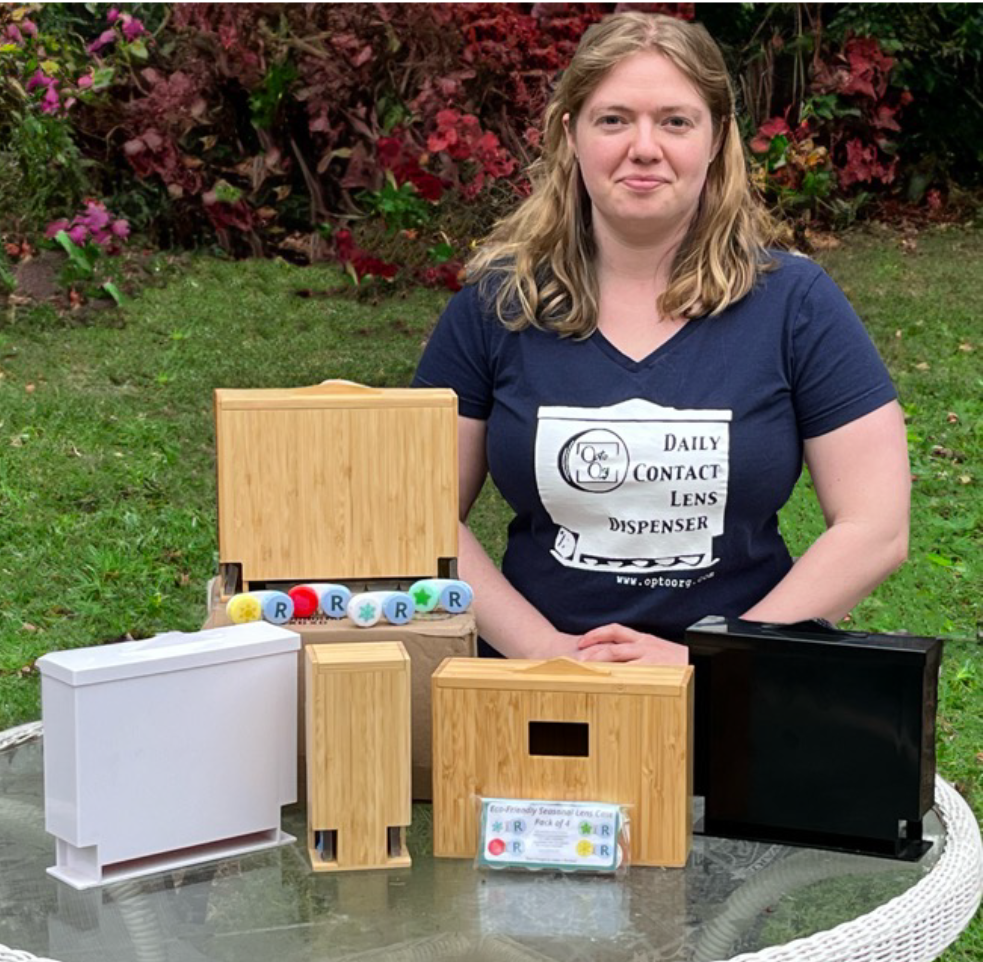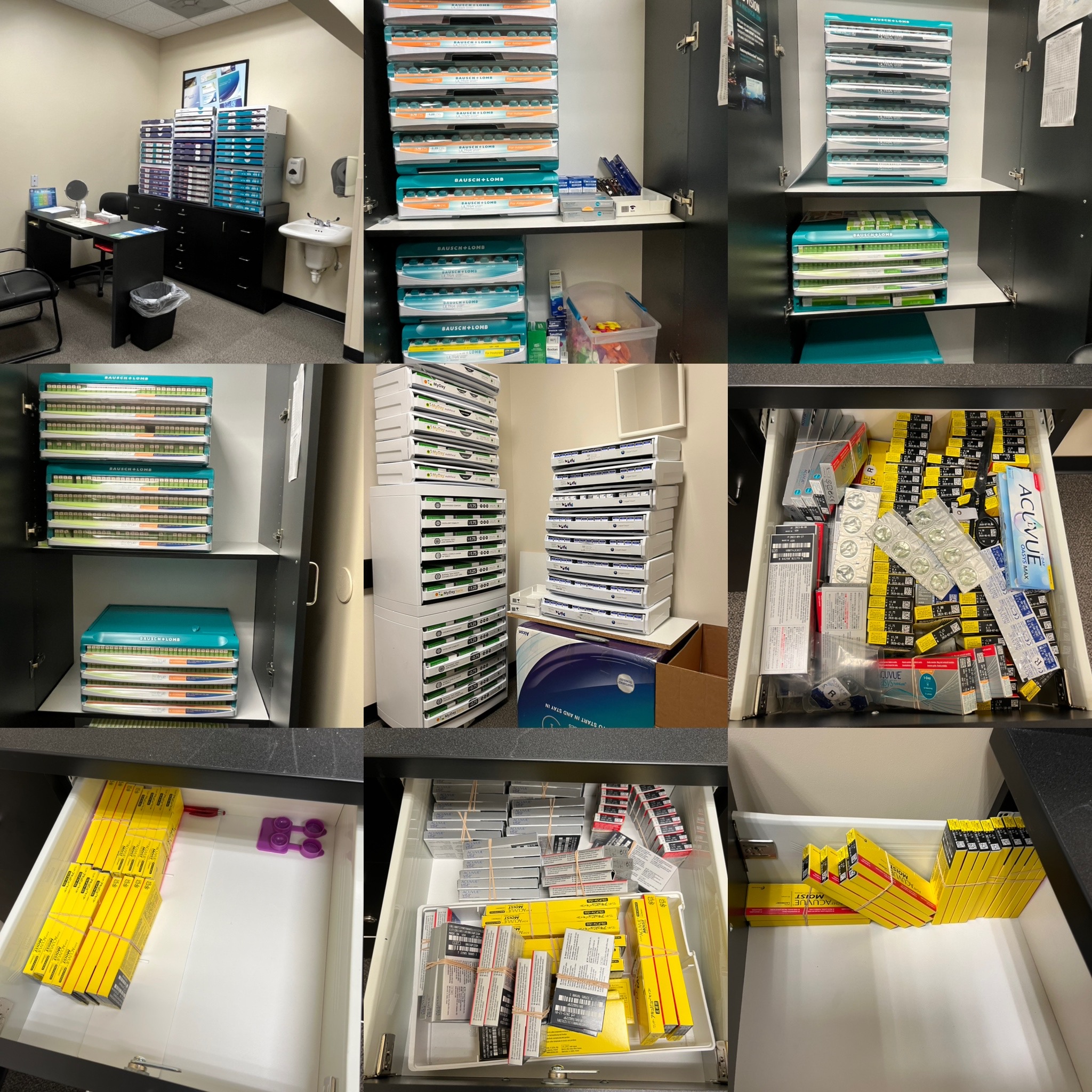

In talking with optometrists, it came to my attention that there was a great desire for better contact lens organization. Efficiently organized fit sets can significantly impact productivity in the following ways.
EFFICIENCY DURING FITTINGS
A well-organized fit set allows eye care professionals to quickly locate the appropriate lenses for each patient. This efficiency streamlines the fitting process, reducing appointment times and increasing the number of patients that can be seen in a day. Practitioners spend less time searching for specific lenses. This frees up more time for patient interaction and care.
MINIMIZED ERRORS
Proper organization reduces the likelihood of mistakes during fittings. With clear labeling and systematic storage, the risk of selecting the wrong lenses or overlooking necessary options is minimized, leading to more accurate fittings and fewer rechecks.
INVENTORY MANAGEMENT
Organized fit sets make it easier to track inventory levels and expiration dates. This ensures that practitioners always have the necessary lenses on hand and reduces the likelihood of expired or unusable lenses taking up space in the set.


TRAINING AND DELEGATION
A structured fit set system facilitates the training of new staff members and allows for easier delegation of tasks related to fittings. With a clear organizational system in place, team members can quickly learn how to assist with fitting procedures and maintain the set’s organization over time.
Last month, I spent five days with the Visionworks Store 368 in Matthews, N.C. During the first two days, I got to know the office and observed their current systems for fit sets. On the third day, I re-arranged the fit sets according to my observations, conversations with the doctor, and output from our proprietary organization software. Then I spent the next two days observing the effects of the re-organization.
Before the re-organization, fit sets were kept in disparate cabinets around the office with the few that were too tall for cabinets left in an empty exam room, drawers full of trials that hadn’t been sorted and put away yet, and sets left out on countertops. I discussed with the resident optometrist which fit sets she uses the most often given her patient demographics as well as what her goals were for optimizing the space. Over my first two days observing the existing setup, the average length of time it took the Optometrist to collect the trial lens and return to the exam room exceeded five minutes.
During downtime, I measured the available spaces, and fit sets, rounding to the nearest quarter of an inch when necessary. I input the results into our proprietary program for spatial arrangement. Based on the output, I created three arrangements I suggested to the optometrist. The direct computer output, the output re-arranged with consideration for her most used brands, and an output that kept current office cabinet use but in a more optimized way.
The doctor chose the arrangement to optimize for both Brand and Space. Since some fit sets would have to go in the spare exam room regardless of the arrangement, the choice was made to put all of the fit sets in the spare exam room so they were all in the same place. The cabinets were then used to store the boxes and extra equipment that had previously been scattered in the spare exam room. I made additional adjustments to the computer’s brand and space optimization to account for the doctor and tech’s heights. My work was much appreciated. The optometrist emailed me the next week and said: “Just wanted to thank you for organizing our contact lenses at VisionWorks Matthews. I found that our contact lenses are much easier to find and work with now.” One of the techs, while I was there said, “When I first started I found the original arrangement overwhelming. I tried to make a system but couldn’t because of the lack of space and scattered fit sets. The new arrangement already looks so much easier to use.”
OptoOrg’s optimization services for fit set arrangement can be done remotely or in person and can include complete cabinet or shelf design and build-out. To have your own office optimized, request a quote at www.optoorg.com/optimize, but in the meantime, here are some tips for free:
When designing a new optometry office:
- Build an entire room dedicated to contact lens fit sets
- When using cabinets to store fit sets, build cabinets 24” or 48” wide with all shelves adjustable to avoid any wasted cabinet space.
- Unless you have a step stool or ladder readily available, plan on stacks of three to four fit sets high but no taller.
Happy fitting!



